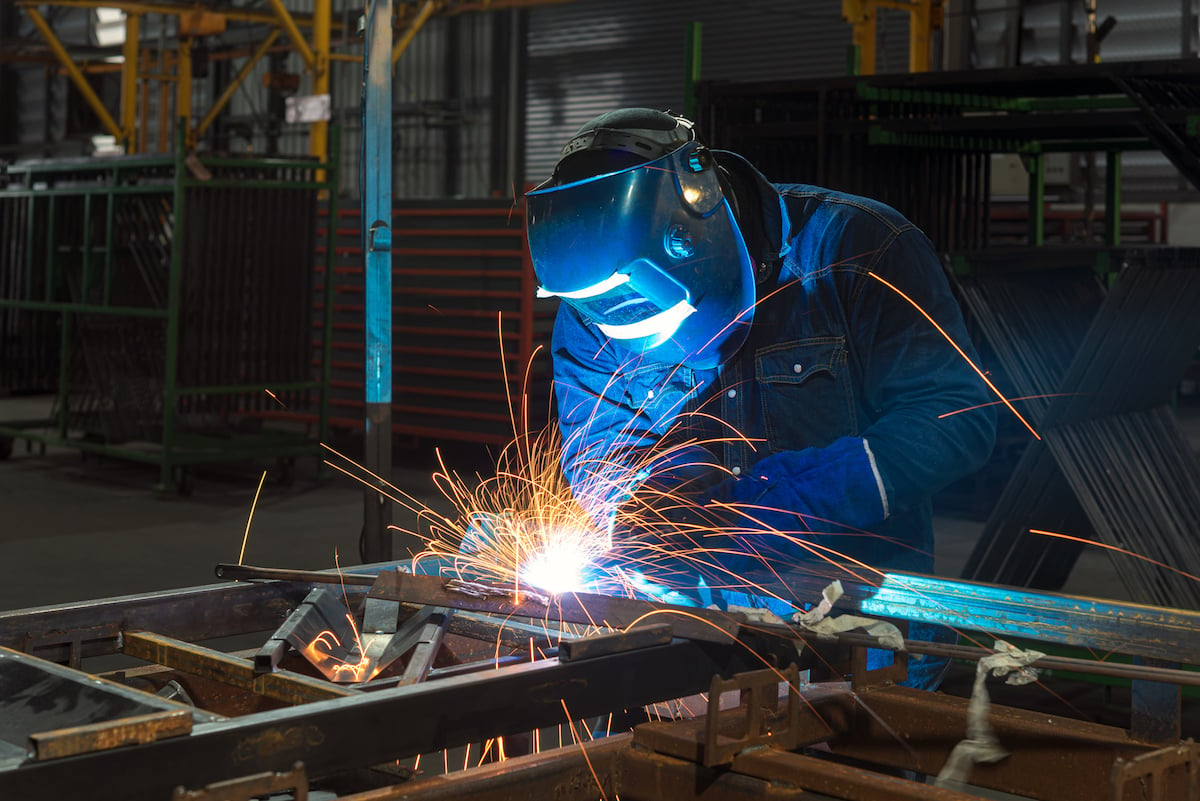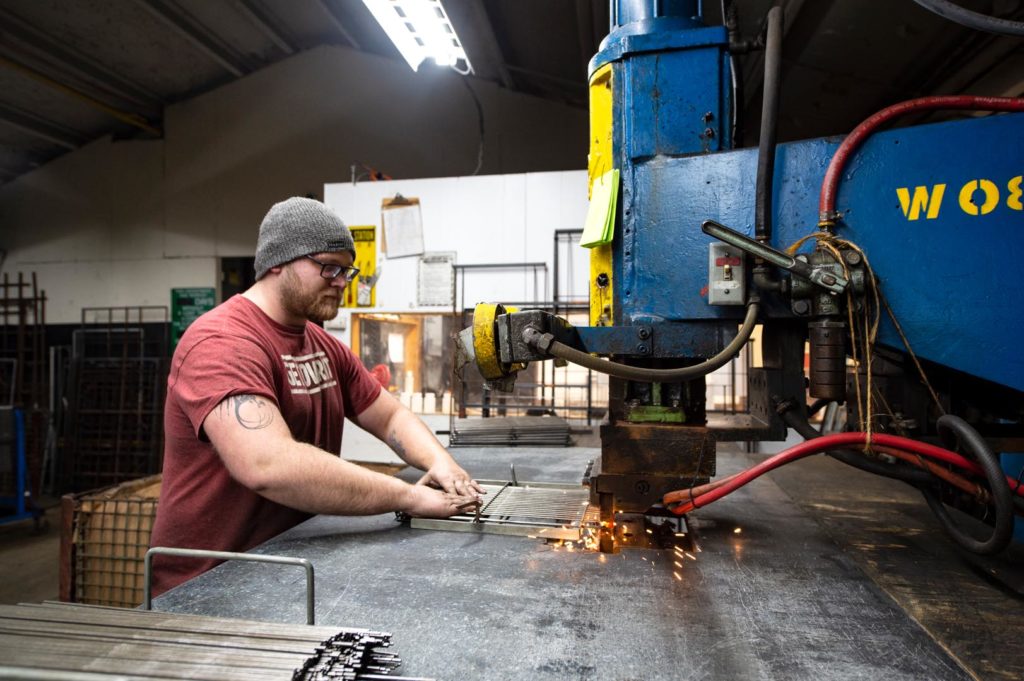Usual Welding Repair Service Issues and How to Address Them Efficiently
Welding repairs often encounter a variety of concerns that can threaten the stability of the end product. Typical problems include insufficient penetration, porosity, and imbalance, to name a few. Each issue provides distinct challenges that need particular techniques for resolution. Understanding these concerns is vital for welders intending to improve their end results and abilities. This discussion will explore these typical welding fixing concerns and efficient approaches to resolve them.
Poor Penetration
Inadequate infiltration occurs when the weld steel falls short to completely fuse with the base product, causing weak joints and possible structural failings. This problem typically stems from inadequate heat input, inaccurate electrode angle, or incorrect welding rate. Welders might come across poor infiltration due to a miscalculation of the essential specifications for a certain product thickness or kind. In addition, contamination on the base product's surface can impede efficient bonding, exacerbating the issue. To attend to inadequate penetration, welders must assure appropriate settings on their tools and maintain a clean work surface area. Regular inspection of welds is recommended to determine any kind of shortages early, permitting prompt improvements and the prevention of compromised structural stability in bonded settings up.
Porosity
Porosity is an usual flaw in bonded joints that manifests as tiny gas bubbles caught within the weld metal. This flaw can jeopardize the honesty of the weld, leading to minimized stamina and possible failure under anxiety. Belgrade Fabrication. Porosity usually arises from contamination, wetness, or incorrect welding methods, which enable gases to leave right into the liquified weld pool. To attend to porosity, welders should guarantee appropriate surface preparation, preserve a clean workplace, and use suitable welding specifications. Additionally, selecting the appropriate filler product and protecting gas can reduce gas entrapment. Normal assessment and screening of welds can assist determine porosity early, guaranteeing timely corrective activities are taken, thereby maintaining the quality and integrity of the bonded framework
Misalignment
Imbalance in welding can arise from various variables, including incorrect setup and thermal expansion. Recognizing the origin is important for effective resolution. A number of improvement strategies are offered to realign parts and assure architectural stability.
Root causes of Misalignment
Welding misalignment often originates from a selection of underlying issues that can jeopardize structural stability. One primary reason is improper fit-up of components prior to welding, which can cause gaps and irregular surfaces. Variations in thermal expansion during the welding process can also cause distortion, particularly if the products being signed up with have different coefficients of development. In addition, inadequate clamping and fixturing may fall short to hold components firmly in position, leading to activity throughout welding. Poorly kept equipment, including welding makers and tools, may present variances in the weld grain, additional adding to misalignment. Driver mistake, stemming from insufficient training or experience, can also play a significant duty in producing misaligned welds.
.jpeg?width=1200&height=675&name=Mold%20Repair%20Welding%20Image%20(1).jpeg)
Improvement Techniques Offered
Addressing misalignment successfully needs a combination of corrective methods tailored to the specific issues available. One usual method is the usage of components or jigs to hold parts in the correct position throughout welding, guaranteeing regular placement. Additionally, pre-heating the products can help in reducing distortion and boost fit-up. For considerable misalignment, mechanical adjustment strategies, such as utilizing hydraulic jacks or clamps, can be employed to correct the setting before welding. Post-weld warmth therapy may additionally be needed to alleviate tensions triggered by misalignment. Careful examination and adjustment throughout the arrangement stage can protect against misalignment problems from becoming considerable problems, promoting a smoother welding procedure and improving overall architectural integrity.
Distortion
Distortion is a common obstacle in welding that can occur from different factors, consisting of unequal heating & cooling. Understanding the sources of distortion is essential for implementing reliable prevention techniques. Addressing this problem not only boosts architectural integrity however also enhances the total quality of the weld.
Sources of Distortion
When based on the intense warmth of welding, materials often go through modifications that can cause distortion. This sensation primarily develops from thermal development and contraction throughout the welding procedure. As the weld location warms up, the product expands; upon cooling, it contracts, which can produce interior anxieties. In enhancement, irregular home heating across a workpiece can aggravate these tensions, resulting in bending or bending. The kind of product also plays a substantial function; steels with varying thermal conductivity and coefficients of expansion may respond in different ways, causing unpredictable distortions. Additionally, inadequate joint design and poor fixturing can add to imbalance during welding, enhancing the possibility of distortion. Understanding these causes is important for effective welding fixing and prevention strategies.
Prevention Techniques
Effective avoidance techniques for distortion throughout welding focus on controlling warm input and making sure appropriate joint design. Maintaining a regular heat input helps to decrease thermal expansion and tightening, which can result in distortion. Making use of strategies such as preheating the work surface can additionally decrease the temperature level slope, advertising uniform home heating. Furthermore, choosing appropriate joint layouts, such as T-joints or lap joints, can enhance stability and reduce anxiety concentrations. Carrying out appropriate fixturing to protect the work surfaces in position better aids in maintaining alignment during the welding process. Staggered welding series can disperse warm extra uniformly, stopping local distortion. By applying these approaches, welders can considerably lower the likelihood of distortion and enhance the total quality of their welds.
Cracking
Breaking is a typical issue encountered in welding repair services, usually arising from different factors such as inappropriate air conditioning prices, product option, or insufficient joint prep work. The occurrence of splits can considerably compromise the integrity of the weld, resulting in potential failures during operation. To address this problem, welders need to first examine the origin creates, guaranteeing that materials are suitable and properly picked for the specific application. Furthermore, regulating the air conditioning price during the welding process is important; quick cooling can induce tension and lead to splitting. Correct joint design and prep work also add to minimizing the threat. Carrying out these strategies can boost weld high quality and sturdiness, inevitably reducing the probability of cracking in ended up weldments.

Insufficient Combination
A significant problem in welding repairs is insufficient fusion, which takes place when the weld metal does not properly bond with the base material or previous weld passes - Montana Mobile Welding and Repair Welding. This issue can cause weaknesses in the joint, potentially jeopardizing the honesty of the bonded structure. Variables adding to incomplete fusion include inadequate warmth input, improper welding strategy, and contamination of the surfaces being signed up with. To resolve this concern effectively, welders must assure proper pre-weld cleansing and surface area prep work, along with change their welding criteria to attain adequate penetration and blend. Normal assessment during the welding procedure can also aid recognize incomplete combination early, enabling for timely rehabilitative steps to improve the general quality of the weld
Overheating
While welding repair services can improve dig this architectural honesty, overheating offers a significant obstacle that can cause product degradation. Extreme warmth throughout welding can change the mechanical buildings of metals, resulting in minimized strength, boosted brittleness, and warping. This sensation is specifically crucial in high-stress applications where structural dependability is vital. Identifying getting too hot can entail visual inspections for staining or distortion, you can check here in addition to checking temperature throughout the welding procedure. To mitigate the risks connected with getting too hot, welders ought to employ suitable techniques, such as controlling warm input, adjusting traveling rate, and making use of suitable filler products. Additionally, executing pre- and post-weld warm treatments can help recover material residential or commercial properties and boost the general high quality of the repair, guaranteeing lasting efficiency and safety and security.
Often Asked Questions
What Are the Typical Indicators of a Welding Flaw?

Exactly How Can I Check My Welds for Quality?
To test welds for top quality, one can make use of visual evaluations, ultrasonic testing, and radiographic approaches. Each technique assures structural honesty, determines issues, and verifies adherence to defined criteria, eventually enhancing the reliability of the welded joints.
What Safety Preventative Measures Should I Take While Welding?
When welding, one should focus on safety and security by using proper personal protective tools, making certain correct ventilation, safeguarding flammable materials away, keeping a clean workspace, and understanding surroundings to stop crashes and injuries.
Can I Repair a Weld Without Remodeling the Entire Joint?
Repairing a weld without remodeling the whole joint is possible, depending on the damages (Belgrade). Strategies such as grinding, adding filler product, or using a welding process can properly resolve particular defects while preserving the surrounding structure
What Equipment Are Necessary for Reliable Welding Services?
Necessary tools for effective welding fixings include a welding equipment, wire brush, grinder, safety gear, clamps, and filler products. Each device plays an essential duty in making certain quality and click reference safety and security throughout the repair procedure. Porosity usually arises from contamination, wetness, or inappropriate welding strategies, which allow gases to run away right into the liquified weld pool. Inadequately conserved tools, including welding devices and devices, might introduce variances in the weld grain, further adding to imbalance. When subjected to the intense warmth of welding, materials frequently undergo adjustments that can lead to distortion. Fracturing is an usual issue experienced in welding repair services, usually resulting from different variables such as incorrect air conditioning rates, material option, or poor joint preparation. A substantial concern in welding repair work is incomplete fusion, which occurs when the weld metal does not adequately bond with the base material or previous weld passes.
Comments on “Stop welding failures with these tips from Montana Mobile Welding and Repair Belgrade Fabrication”